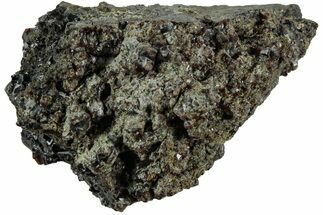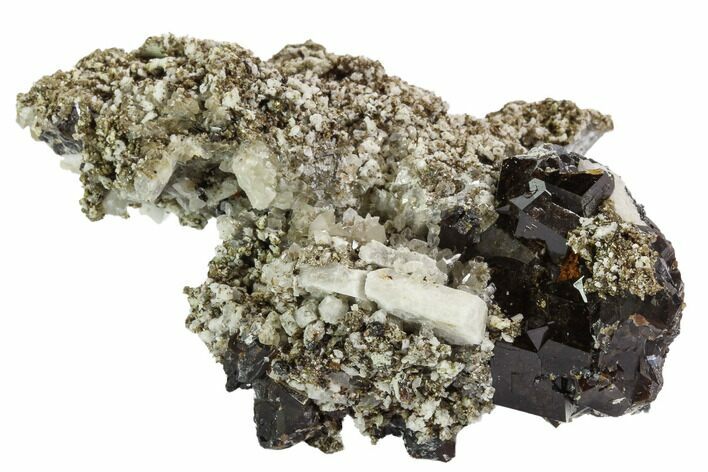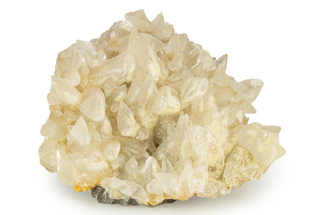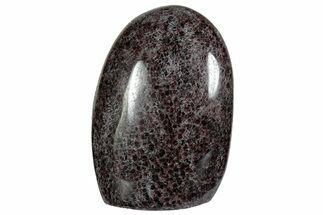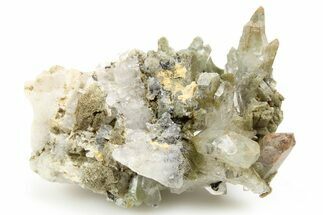This Specimen has been sold.
3.8" Garnet Cluster with Calcite, Mica & Feldspar - Pakistan
This garnet centered specimen comes from a location in Pakistan, where associations of deep orange/brown garnets, feldspar, golden mica and calcite are typically found. The garnets from this location display a unique pattern, which can be seen along the faces of the crystals when rotated under light.
About Calcite Crystals
Calcite crystals are a form of calcium carbonate (CaCO₃) known for their diverse shapes, transparency, and vibrant range of colors. They typically form in rhombohedral, scalenohedral, or prismatic shapes, often with well-defined, sharp edges and glossy surfaces. Calcite crystals are often translucent or transparent, sometimes displaying a double refraction effect where objects viewed through the crystal appear doubled. They can appear in various colors—white, clear, yellow, pink, blue, green, and orange—depending on impurities or trace minerals.
A notable characteristic of calcite is its reaction with weak acids like vinegar, which causes it to effervesce, or fizz, as it releases carbon dioxide. This property makes calcite crystals a key tool in geological identification and studies. Calcite forms in many environments, from sedimentary rocks like limestone and marble to hydrothermal veins.
Calcite crystals are a form of calcium carbonate (CaCO₃) known for their diverse shapes, transparency, and vibrant range of colors. They typically form in rhombohedral, scalenohedral, or prismatic shapes, often with well-defined, sharp edges and glossy surfaces. Calcite crystals are often translucent or transparent, sometimes displaying a double refraction effect where objects viewed through the crystal appear doubled. They can appear in various colors—white, clear, yellow, pink, blue, green, and orange—depending on impurities or trace minerals.
A notable characteristic of calcite is its reaction with weak acids like vinegar, which causes it to effervesce, or fizz, as it releases carbon dioxide. This property makes calcite crystals a key tool in geological identification and studies. Calcite forms in many environments, from sedimentary rocks like limestone and marble to hydrothermal veins.
Muscovite is a phyllosilicate mineral of aluminium and potassium. It has a highly perfect basal cleavage, yielding remarkably thin laminæ that are often highly elastic. It can be colorless or tinted through grays, violet, or red, and can be transparent or translucent. Fuchsite and mariposite are green varieties of muscovite, owing their green color to chromium impurities. Alurgite is a manganese-bearing, purple to reddish variety of muscovite.
Feldspars are a group of rock-forming tectosilicate minerals. They are the most common minerals on Earth, making up nearly 60% of the crust.
Garnets are nesosilicates with the general formula X3Y2(SiO4)3. Garnets come in many species, including pyrope, almandine (the most common species), spessartine, uvarovite, andradite and grossular, varieties of which are hessonite, cinnamon-stone, and tsavorite. Garnets are found in a wide variety of colors including red, orange, yellow, green, purple, brown, blue, black, pink, and colorless, though reddish shades are the most common.
SPECIES
Garnet, Calcite, Feldspar & Mica
LOCATION
Raskoh, Kharan, Balochistan, Pakistan
SIZE
3.8 x 2.8"
CATEGORY
SUB CATEGORY
ITEM
#100429
 Reviews
Reviews
